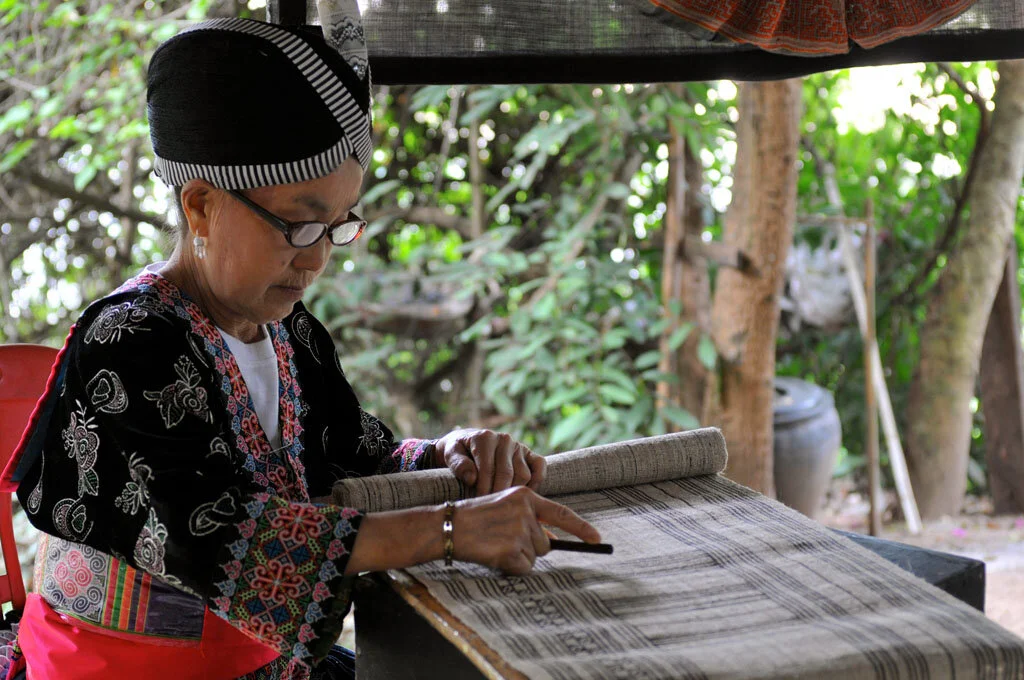Zu Xiong, Master of Hmong Batik, Laos
Zu Xiong, a true expert in the batik technique, belongs to the Hmong community. She was raised in a village in Northern Laos and now practices and teaches her craft at the Ock Pop Tok Living Arts Centre in Luang Prabang.
Zu Xiong was introduced to batik at the age of 12. Almost 50 years later, she has the technique down to an art, and is one of few women in this area who still practice batik. She starts by drawing on natural hemp fabric with black ink, a mixture of beeswax and indigo dye, using a bamboo and metal stylus. She gradually covers the entire surface of the fabric in a symmetrical design that starts from the edges. Her stylised drawings depict snails, plants and leaves, cucumbers and squash seeds – everyday motifs drawn from life in Northern Laos.
Next, Zu Xiong prepares the pigments to colour the hemp fabric. Indigo leaves are put in a jar for four days. The leaves are then removed and the pigments left to ferment in a vat for an additional seven days. Once the dye is ready, the patterned hemp is repeatedly cold-soaked and sundried. To obtain the intense blues and deep blacks synonymous with Hmong batik, the dipping and dyeing process must be repeated three to four times per day, ideally up to 40 times over a month-long period. Finally, the fabric is boiled to melt away the wax. The drawings then appear in white.
Indigo batik is the basis of all Hmong textile designs. The dyed cloth is embellished with embroidery and appliqué to create textiles and costumes. Oftentimes several pieces of fabric are assembled to create voluminous pleated wedding skirts. View the full article on Tissus & Artisans Du Monde.





